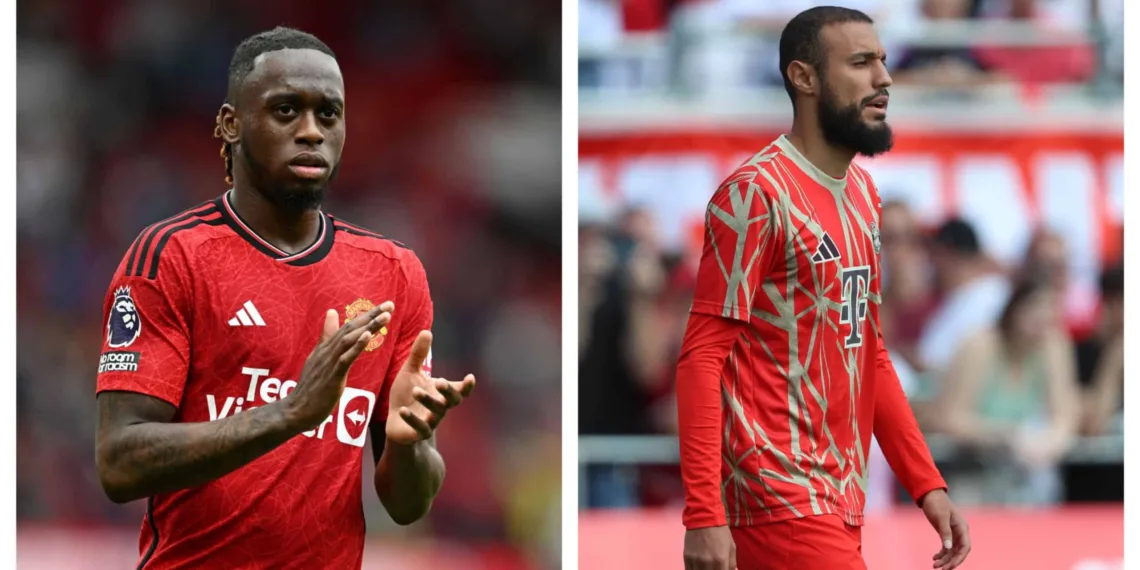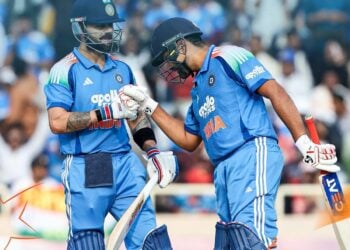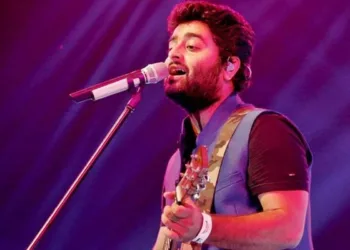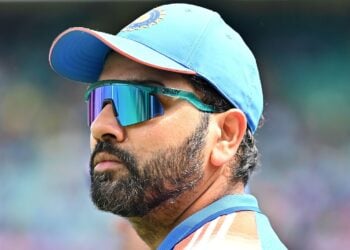Manchester United are poised to sell Aaron Wan-Bissaka to West Ham, with Noussair Mazraoui set to be his replacement. We examine the contrasting styles of these two right-backs.
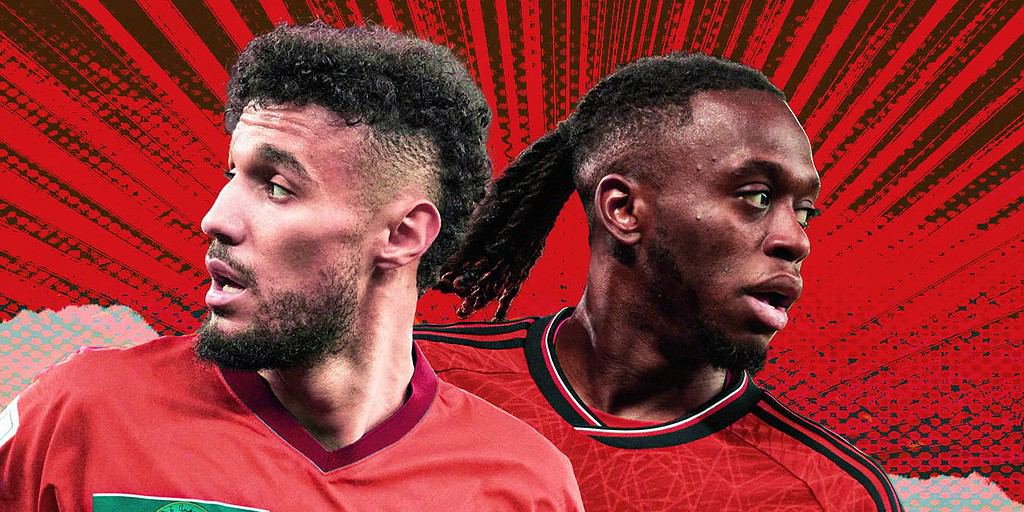
When Manchester United’s new management structure began to take shape following the arrival of Sir Jim Ratcliffe and INEOS, many fans were hopeful that manager Erik ten Hag would have less responsibility in recruitment than he previously did.
How old is Aaron Wan-Bissaka?
26
It had been a common criticism of the Dutchman that he frequently relied on players he was familiar with or had connections to from his days in the Eredivisie. Lisandro Martínez, Christian Eriksen, Tyrell Malacia, André Onana, Antony, and Sofyan Amrabat all fall into this category, and it’s fair to say their performances have been mixed.
Read More: AC Milan Pioneers Maternity Policy For Their Female Players and Staff
Ten Hag’s Network and United’s Evolving Right-Back Strategy
Nevertheless, it appears that Ten Hag’s network continues to play a significant role in United’s transfer strategy for the 2024-25 season, with Matthijs de Ligt heavily linked with a move to Old Trafford and Noussair Mazraoui potentially next in line.
According to multiple major outlets, the Moroccan right-back is very close to becoming a United player. This situation may frustrate some sections of the fanbase, considering the mixed success of Ten Hag-affiliated players at Old Trafford over the past two years. This is also their first transfer window since the appointment of Dan Ashworth as sporting director.
However, if Mazraoui’s move from Bayern Munich goes ahead, it will likely mark the end of Aaron Wan-Bissaka’s time at the club. This combination of transfers would represent a significant shift at right-back for United, one that many fans would welcome.
The two players have notably different styles. Despite costing around £50 million, Wan-Bissaka has been a reliable defender for United. While he has faced criticism for his positioning, there are few better one-on-one defenders in the world, and his tackling ability often compensates for any positional shortcomings.
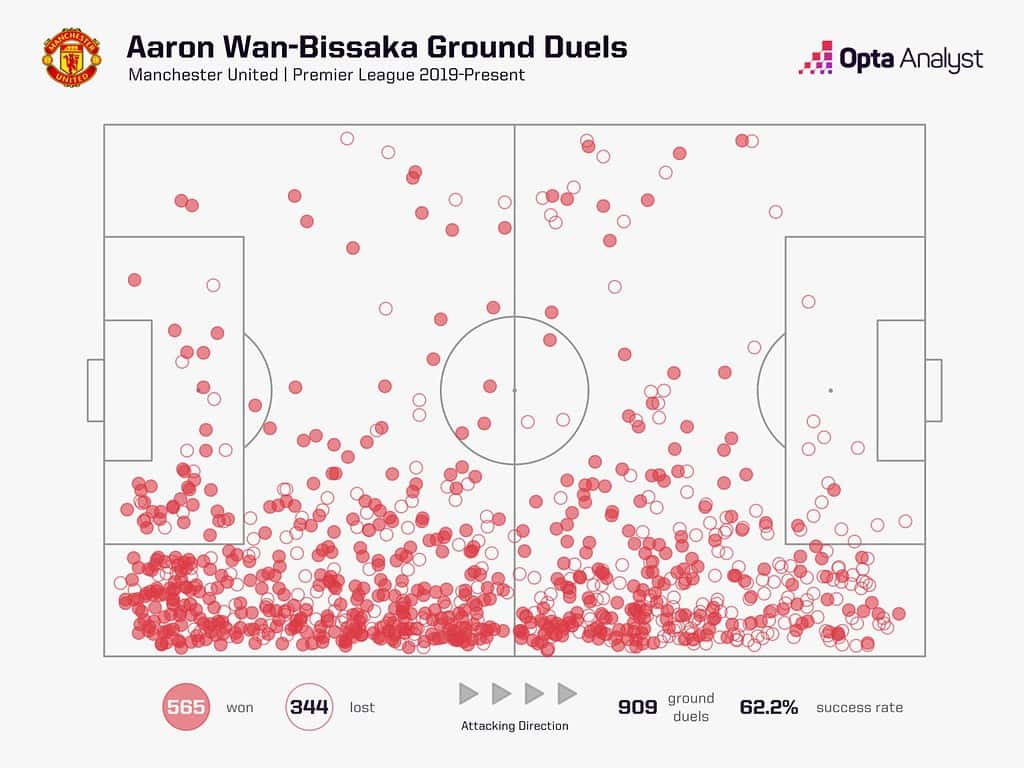
However, his technical shortcomings, particularly in the final third, are undeniable. It was hoped that he would steadily improve in this area after his move from Crystal Palace in 2019, but five years later, it’s difficult to argue that significant progress has been made.
This doesn’t have to be a major issue, as Wan-Bissaka is generally regarded as a defensive-minded full-back, and in that role, few are better. But if Ten Hag wants United to have more control in matches after being notoriously open last season, improving technical standards seems like a reasonable strategy. In modern football, full-backs often play a crucial role in establishing possession dominance for top clubs. Despite his strengths, Wan-Bissaka is unlikely to ever excel in that area.
Mazraoui’s Technical Edge Over Wan-Bissaka and Attacking Prowess
Mazraoui, on the other hand, seems like a better fit. A key factor is his previous experience playing under Ten Hag, though this alone doesn’t guarantee success, as previously noted.
He is more technically skilled than Wan-Bissaka and naturally inclined to push forward and influence the attack. This could benefit whoever plays on the right wing, as Mazraoui’s propensity for assertive overlapping and underlapping runs is likely to be greater than Wan-Bissaka’s.
The heat maps below provide a clear summary of the different ways the two players have operated over the past two years.
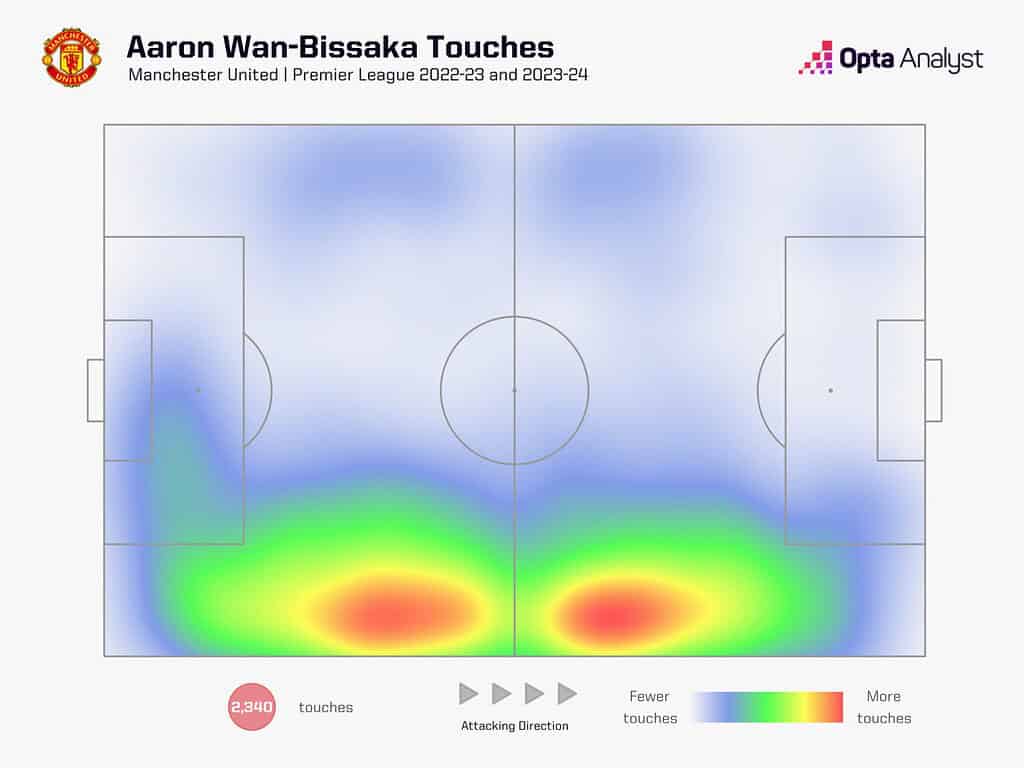
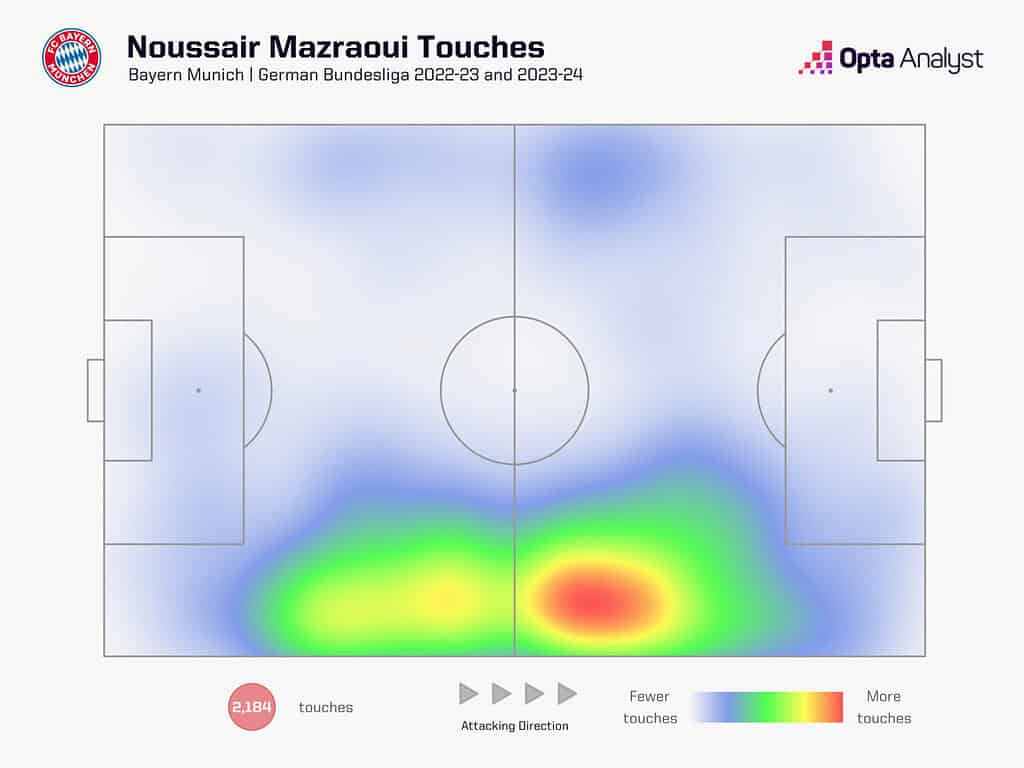
While Wan-Bissaka’s touches are distributed across both halves of the pitch, Mazraoui’s touches are more concentrated in the attacking half. Team styles play a role in this, though Ten Hag’s United has not been considered particularly defensive.
Mazraoui’s technical skills and attacking mentality have made him a greater threat in the final third over the past two years at Bayern compared to Wan-Bissaka during the same period. The Moroccan is more comfortable carrying the ball upfield, combining those moves with taking a shot or seeking the killer pass.
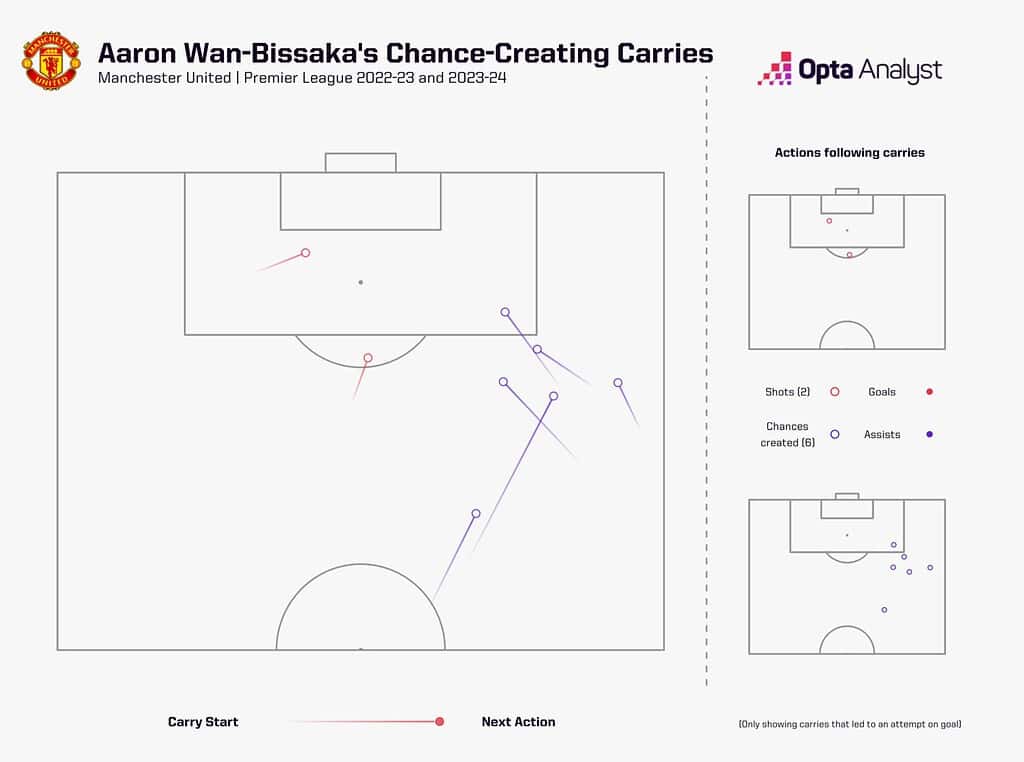
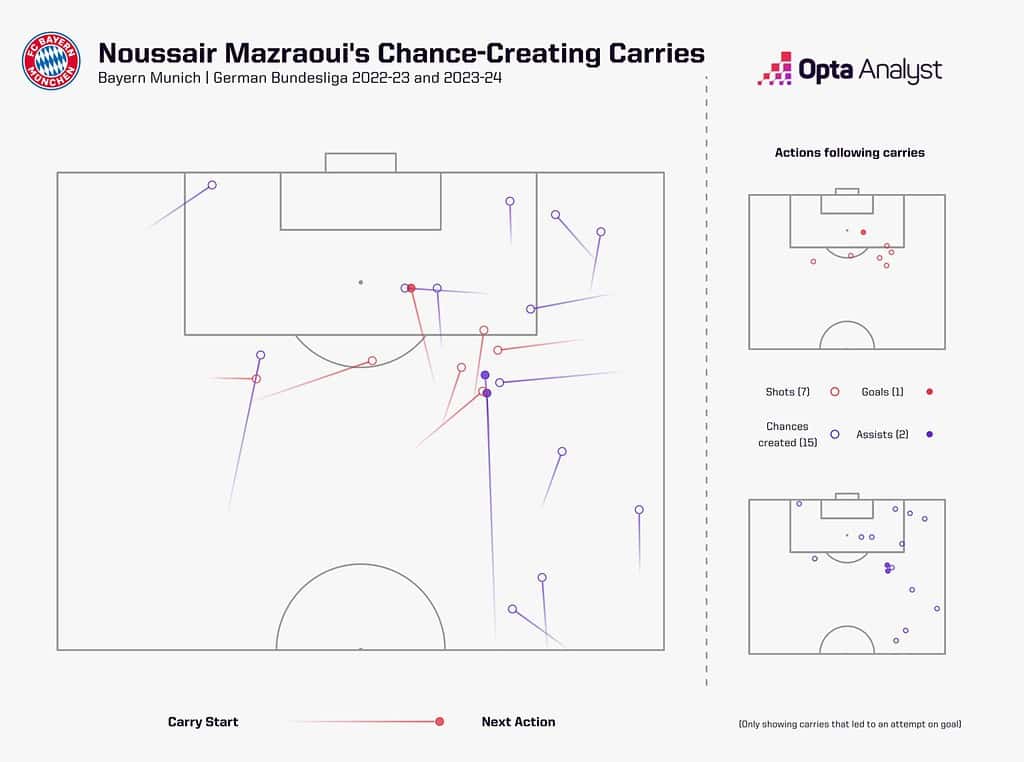
While their overall chance creation totals over the past two years may not suggest a significant difference, a per-90-minute analysis reveals a substantial gap: Wan-Bissaka averages 0.76, while Mazraoui averages 1.35, placing him in the top 87% among full-backs in Europe’s top five leagues during that period.
A quick look at the Opta Player Radars below further emphasizes their contrasting attacking styles. Although team tactics can influence these metrics, they do not fully account for the notable advantage in Mazraoui’s favor.
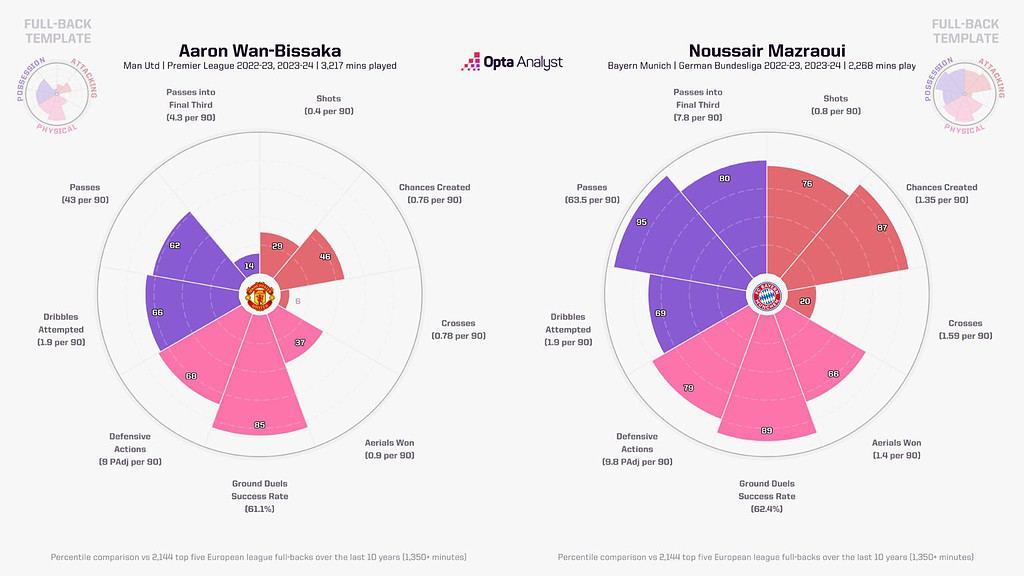
Given this, it’s not surprising to learn that Mazraoui spent his formative years learning the ropes in midfield until Ten Hag converted him into a right-back shortly after he broke into Ajax’s senior squad.
Mazraoui’s Versatility and Defensive Stats: A Potential Upgrade
Initially, he struggled to outshine Sergiño Dest, but Mazraoui found his stride in Ten Hag’s final season in Amsterdam. The Moroccan international thrived in a role that often had him moving into central spaces, and his on-pitch relationship with Antony was notably strong.
Defensively, Mazraoui isn’t as dominant in one-on-one situations as Wan-Bissaka, but his record in ground duels over the past two seasons has been impressive. With a 62.4% success rate, he ranks in the top 89% for full-backs, surpassing Wan-Bissaka, who seems headed to West Ham.
Furthermore, Mazraoui’s 68.9% success rate in aerial duels over the past two seasons also surpasses Wan-Bissaka’s 61%. While some might argue that Wan-Bissaka faced tougher wingers in the Premier League, it’s difficult to quantify this accurately.
Mazraoui also has the added advantage of being comfortable in various positions, including left-back. Wan-Bissaka has appeared uncomfortable when asked to fill in on the left, which led to Diogo Dalot serving as a backup on the left side with Luke Shaw and Malacia both missing much (or all, in Malacia’s case) of the 2023-24 season.
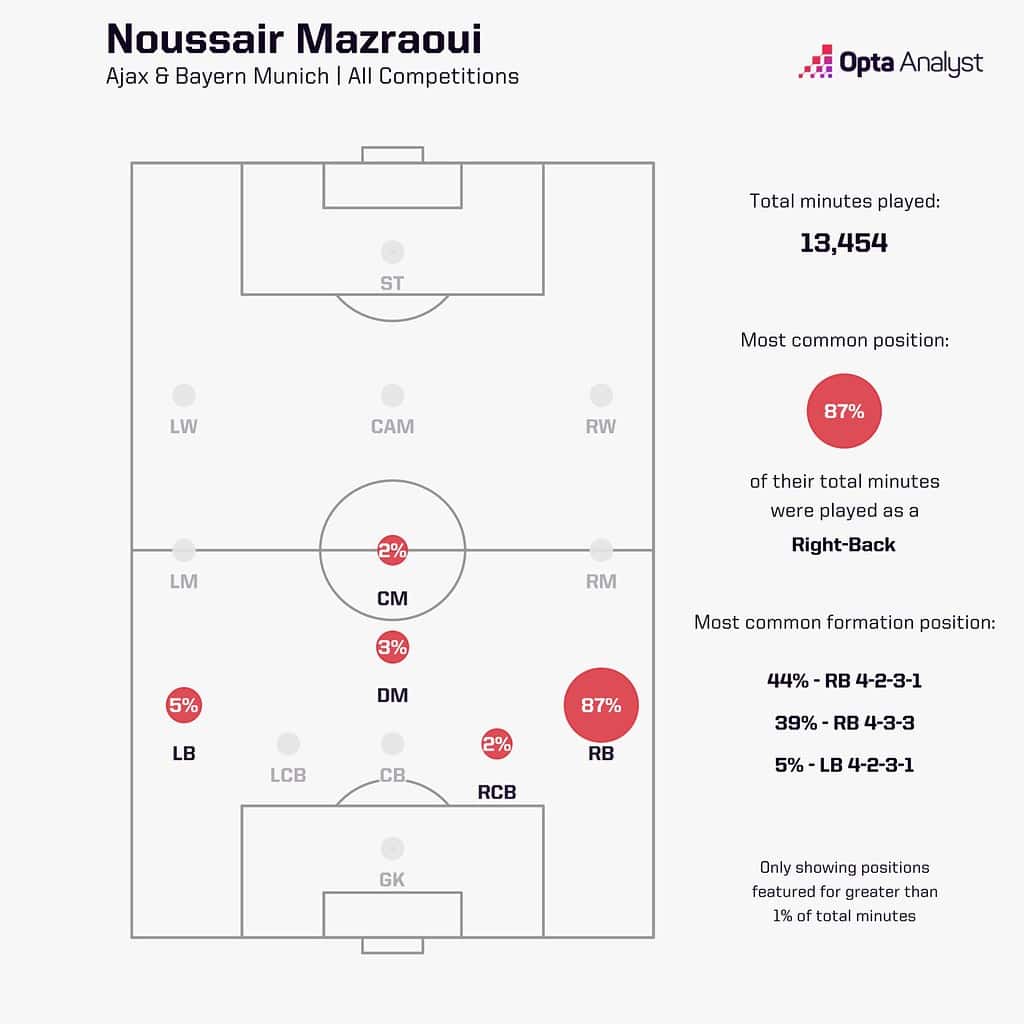
Some supporters might still be haunted by the club’s defensive injury crisis last season. Given Shaw’s inconsistent fitness and Malacia still being unfit, having both Dalot and Mazraoui capable of filling in on the opposite flank would be a welcome relief.
However, Mazraoui’s injury history might unsettle those same fans, as his time at Bayern has been interrupted by short spells on the sidelines.
If Mazraoui can stay fit for the majority of the time, there’s a lot to like about this deal. Wan-Bissaka’s technical weaknesses have been a source of frustration for some, and United’s lack of control last season was concerning. In theory, Mazraoui could help address this issue, as he is undoubtedly a better technician than Wan-Bissaka.
While it might be risky to proceed without a defensive-minded right-back in reserve, perhaps a greater attacking purpose is what United needs. Mazraoui is certainly a player who could be appreciated at Old Trafford.

